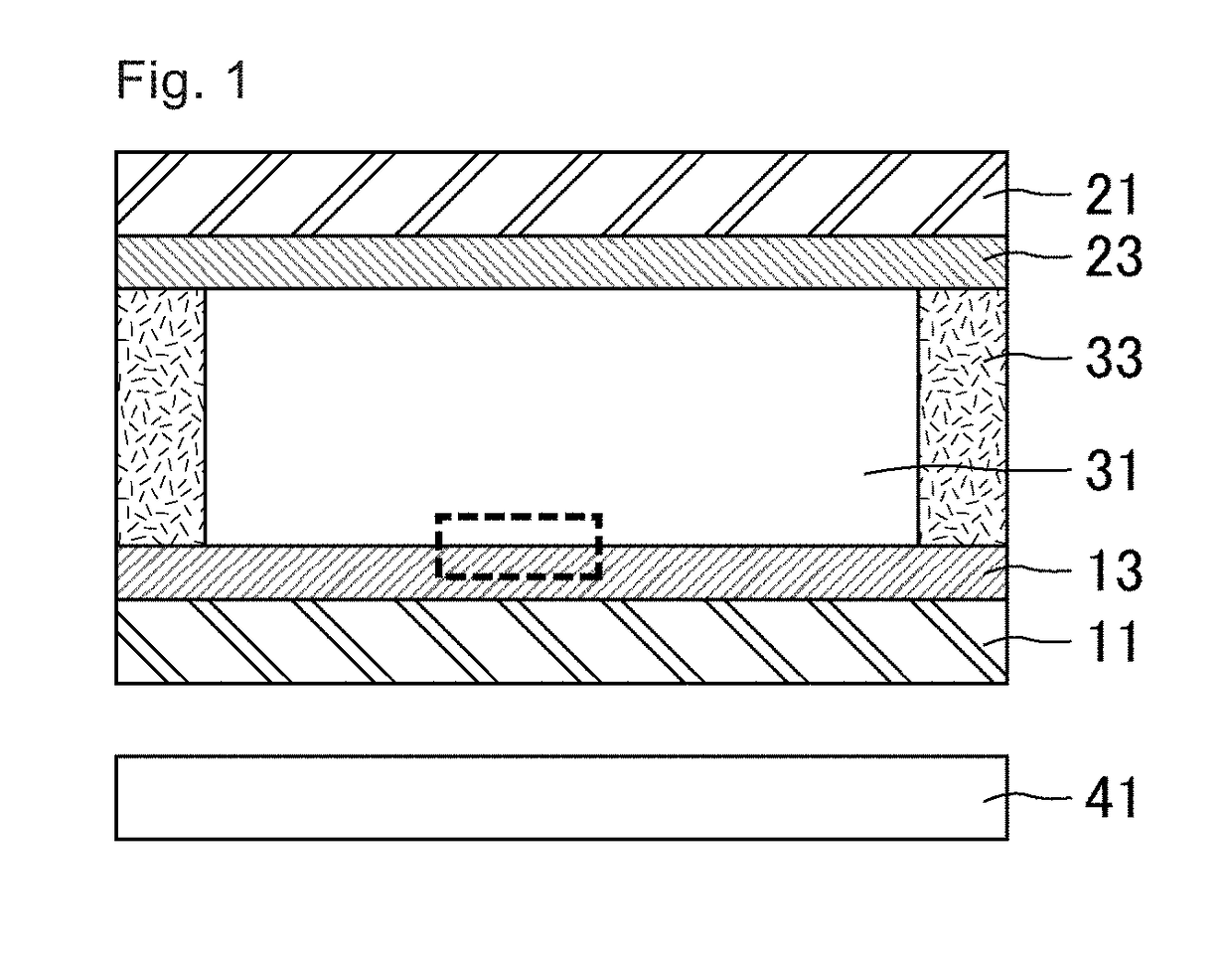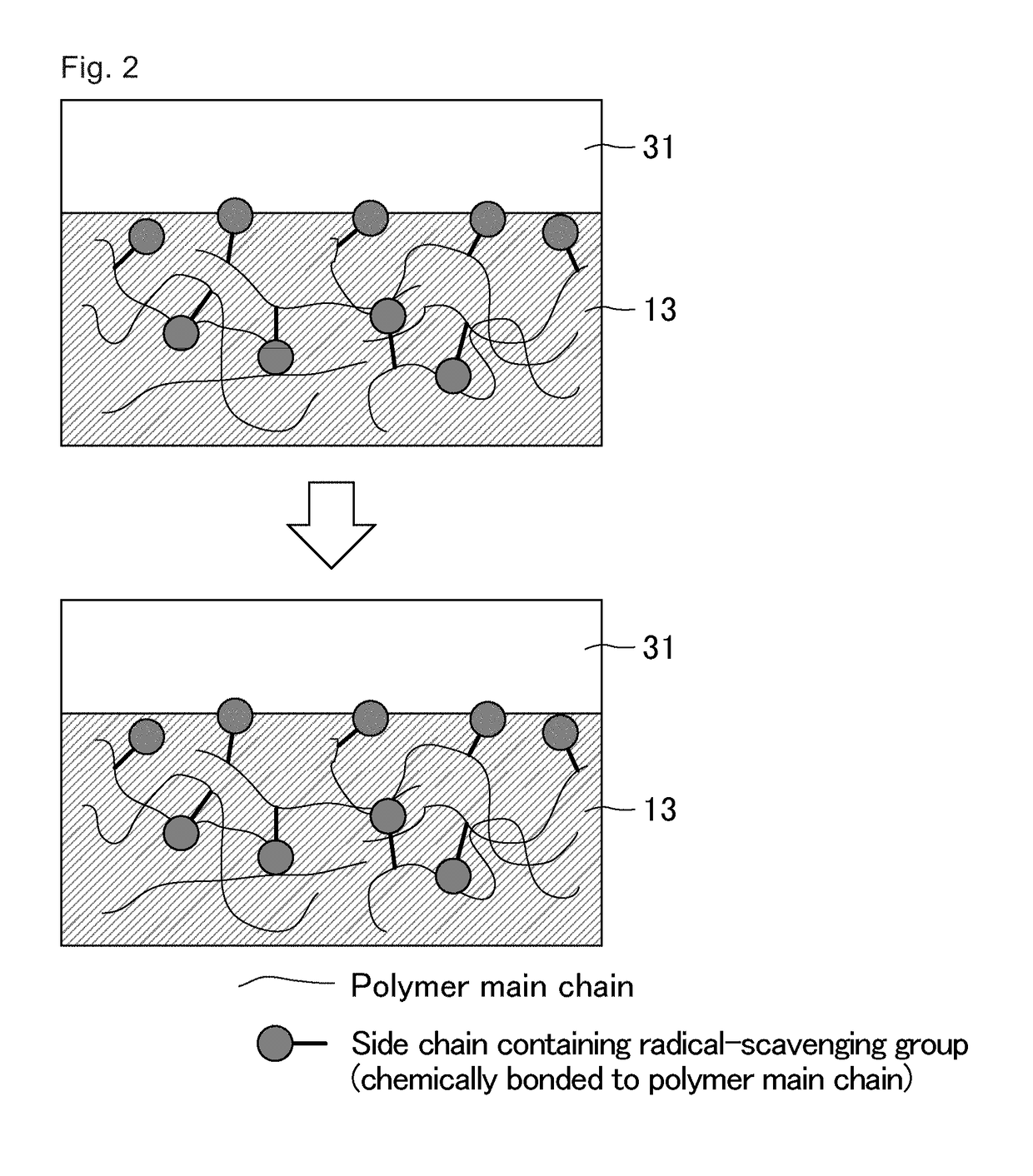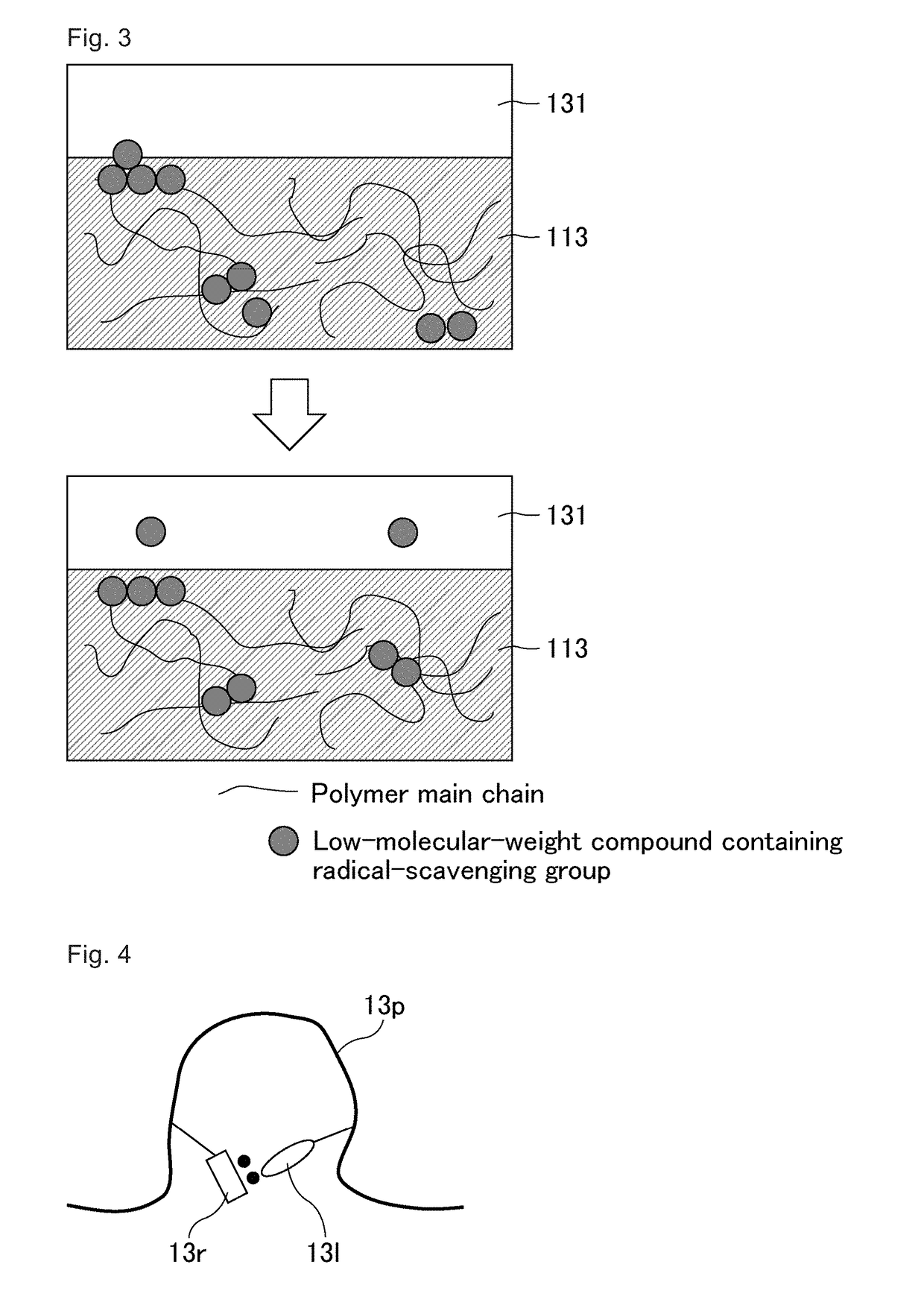Alignment film, polymer, and liquid crystal display device
- Summary
- Abstract
- Description
- Claims
- Application Information
AI Technical Summary
Benefits of technology
Problems solved by technology
Method used
Image
Examples
first embodiment
[0050]In a first embodiment, a radical-scavenging group having a piperidine skeleton is introduced into a polymer containing a photo-aligning functional group (e.g., a polysiloxane, a polyvinyl) by a chemical bond so that the radical-scavenging group can effectively scavenge and deactivate a radical generated from the photo-aligning functional group.
[0051]FIG. 4 is a schematic view of a polymer constituting a photo-alignment film, wherein the polymer contains a radical-scavenging group. The radical-scavenging group introduced into the polymer containing a photo-aligning functional group by a chemical bond scavenges radicals generated due to absorption of backlight illumination by the photo-aligning functional group in the photo-alignment film (e.g., FIG. 4). In FIG. 4, a polymer portion 13p of the polymer constituting a photo-alignment film has a photo-aligning functional group 131 and a radical-scavenging group 13r. The radical-scavenging group 13r scavenges radicals generated from...
second embodiment
[0081]In a second embodiment of the present invention, a radical-scavenging group having a benzoquinone (anthraquinone) skeleton is introduced into a polymer containing a photo-aligning functional group by a chemical bond.
[0082]Radical-scavenging groups having a quinone skeleton such as a benzoquinone (anthraquinone) skeleton have an effect similar to that of the radical-scavenging groups having a piperidine skeleton. In addition, radical-scavenging groups having a benzoquinone (anthraquinone) skeleton also have an antioxidative effect. They thus can prevent oxidation of a liquid crystal material or an alignment film material. The same can be said also when the polymer in the alignment film is a polymer other than a polysiloxane or a polyvinyl (e.g., a polyimide with a relatively low molecular weight or a polyimide with a low imidization ratio).
[0083]For example, the polymer having a main chain derived from a polysiloxane according to the second embodiment is preferably a polymer re...
examples corresponding to first embodiment
[0092]The following will show one example of synthesis of a polysiloxane-based polymer containing, in a side chain, a radical-scavenging group having a piperidine skeleton.
[0093](A) Thionyl chloride was added dropwise to a benzene solution (10 mL) containing 1 g (5 mmol) of 4-carboxy-TEMPO represented by the following formula (2), so that acid chloride (4.65 mmol, yield: 93%) represented by the following formula (3) was synthesized. Then, a benzene solution (5 mL) containing 0.55 g (2.5 mmol) of the acid chloride represented by the following formula (3) was added dropwise to a benzene solution (10 mL) containing 0.42 g (2.5 mmol) of ethyl 4-hydroxybenzoate and 0.5 g (5 mmol) of triethylamine at room temperature in a nitrogen atmosphere. The components were then reacted for two hours at room temperature. After the reaction completion, impurities were extracted with water and the resulting product was purified by column chromatography (toluene / ethyl acetate (4 / 1)). Thereby, 0.78 g (yi...
PUM
| Property | Measurement | Unit |
|---|---|---|
| Fraction | aaaaa | aaaaa |
| Fraction | aaaaa | aaaaa |
| Fraction | aaaaa | aaaaa |
Abstract
Description
Claims
Application Information
 Login to View More
Login to View More - Generate Ideas
- Intellectual Property
- Life Sciences
- Materials
- Tech Scout
- Unparalleled Data Quality
- Higher Quality Content
- 60% Fewer Hallucinations
Browse by: Latest US Patents, China's latest patents, Technical Efficacy Thesaurus, Application Domain, Technology Topic, Popular Technical Reports.
© 2025 PatSnap. All rights reserved.Legal|Privacy policy|Modern Slavery Act Transparency Statement|Sitemap|About US| Contact US: help@patsnap.com



